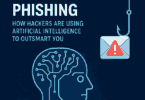The Internet seems like it is dead now. When it is awake, the line between humans & bots is getting more blurred by the day. Although it was previously a fringe conspiracy, it now has a few nuggets, which feel true to this age. There are a few experts who have already started to predict that artificial intelligence will generate much of the internet. As a result, it will bring questions regarding humanity & authenticity online. If you have heard of the Dead Internet Theory, you must know that it is going to gain traction on the site, which was formerly called Twitter, now X.
What is the Dead Internet Theory?
The Dead Internet Theory is a belief that content made by AI and bots has replaced multiple posts, several web traffic, and users. So, people are not capable of shaping the internet’s direction anymore.
In the late 2010s, this theory was floating around 4Chan. But after eleven years, its solidification and amplification were done, after a lengthy post that described the theory, which was posted on a thread with the title “Dead Internet Theory: Most Of The Internet Is Fake” on the forum Agora Road’s Macintosh Cafe.
Kaitlyn Tiffany gave information related to this theory, while writing for The Atlantic and described it as the “ur-text.” It helps to set the theory’s shape. He was even able to manage to contact the original poster, who was a Californian man claiming to believe his written words.
A sense of loneliness is described in his post. It expresses deep disappointment at the modern web’s state. According to his suggestion, artificial intelligence has successfully drowned out most online human activity, with the aim to give a new shape to the internet to make it a more controlled form for selling products and ideas.
Strange Ideas:
However, the theory has gone further than just condemning the internet of recent times as dull & corporate slop. According to the post, people hardly interact with real humans on the web, or they rarely see posts made by them. A few of his strange ideas suggest that the fame of Raptor Jesus, Foul Bachelor Frog & Pepe the Frog memes are proof of an evolving AI life-form that is changing its shape.
In 2021, this post was written when ChatGPT was not even released commercially, and artificial intelligence was not a hot topic. However, AI has always been an important discussion. This theory turns out to be something of a meme. Also, it has become the internet’s semi-ironic description.
A post on X drew attention to the bot infestation of the platform last week. After that, the theory was cited widely.
Claims and Evidence of the Dead Internet Theory:
Large Language Models:
The standard form of GPTs is Generative pre-trained transformers. It refers to a kind of LLM used to employ artificial neural networks so that you can create human-like content. OpenAI was the first company to develop these models. After that, these models have generated a huge controversy.
For instance, Timothy Shoup of the Copenhagen Institute for Future Studies gave a statement, saying that the internet is going to be completely unrecognizable when GPT-3 ‘gets loose. According to his prediction, almost all (99% to 99.9%) of online content will turn into AI-generated by 2025 to 2030. And such predictions serve as proof for the dead internet theory.
-
ChatGPT:
ChatGPT was released in 2022 to the general public. It led journalists to describe the theory as more realistic than before. This theory was emphasized previously by government organizations, corporations, & tech-literate individuals. However, because of ChatGPT, the power of artificial intelligence has been given to the hands of average web users. Even the technology causes several concerns, such as the internet might be filled with content that people make using artificial intelligence, and it is going to drown out organic human content.
-
2016 Imperva Bot Traffic Report:
A report on bot traffic was released in 2016 by the security firm Imperva. They found that bots drew almost 52% of web traffic, and it was the first time when this surpassed human traffic. In the reports on the dead internet theory, these have been used as proofs.
-
Reddit:
Previously, Reddit allowed people to access its data & API for free. It enabled users to employ third-party moderation apps. Also, it allowed users to train artificial intelligence in human interaction. In a controversial move, this social media site moved with the aim of charging to access its user dataset. Companies that train artificial intelligence probably keep on using the data in order to train future AI.
You already know that large language models like ChatGPT are now available in the market to be accessed by the general public. Therefore, bot accounts & users are increasingly employed on Reddit. According to Professor Toby Walsh of the University of New South Wales in an interview with Business Insider, content is likely to suffer when AI’s next generation will be trained on content that old generations created. John Licato, who was a professor at the University of South Florida, compared this scenario to the Dead Internet Theory.
X Corp. (Formerly known as Twitter):
The users of X have noted that this bot activity has a great impact on their experience.
-
“I hate texting” Tweets:
You can find multiple Twitter accounts which began to post tweets with the phrase “I hate texting,” that is followed by an alternative activity like “I hate texting; I just want to hold ur hand” or “I hate texting, just come live with me.” While such posts received a million likes, several people suspected them to be bot accounts. The dead internet theory’s proponents have used these accounts as an instance.
-
Acquisition Of Twitter By Elon Musk:
The percentage of Bots running a lot of user accounts is very high. Therefore, it has now become a major problem during Elon Musk’s acquisition of Twitter. He disputed Twitter’s claim that even less than 5% of mDAU or monetizable daily active users were bots.
He also commissioned the Cyvra company in order to estimate the percentage of Twitter accounts that worked as bots. And one study day showed that the estimation is 13.7%. On the other hand, 11% is the second estimation. It is believed that a disproportionate amount of the content is created because of such bot accounts. Believers in this theory have pointed to this incident.
YouTube:
-
“The Inversion“:
For fake YouTube views, a market is available online, allowing increasing the credibility of a video. Also, it permits to reach broader audiences. Fake views were prevalent at the time. So, a few engineers got concerned with YouTube’s algorithm to detect them. And it will start treating the fake views as defaults. Also, these begin to misclassify real ones. In order to describe the phenomenon, YouTube engineers coined the term “the inversion.” In a thread on the web forum, Agora Road’s Macintosh Cafe, YouTube bots, and the fear of “the inversion” were mentioned as support for this theory.
-
Coverage On YouTube:
Several YouTube channels & online communities like the Linus Tech Tips forums have already covered this theory. In order to advance the idea into mainstream discourse, this theory has helped so much.
What Happened With The Bots On X (Twitter)?
A popular post on X has compared the Kazakh’s sound to a diesel engine, which starts in winter. It is now having more than two thousand reposts and twenty-four thousand likes. It is hard to say if the caption is relevant. The reason is that the video has no audio. In this way, several users thought that these might be the bots that were mindlessly liking the post.
It has led X users to repost the video. They declare that the site formerly called Twitter was “cooked.” In recent times, it has become a common talking point on the site. However, complaints from regular X users have been received about the amount of inane, & clearly AI-generated replies with infested X.
X users are still capable of managing to find weird replies from the humans they know. However, the bots’ proliferation affects the user experience. According to others, X is not the only one. Instead, generative AI is also used in order to autofill product descriptions & names on Amazon.
Writers and artists have been lamenting for some months that AI-created images have filled the internet. And these photos do not have any value beyond novelty. Also, AI-generated writing is filling the internet, but people do not want to read the writing.
During the introduction of the technology, critics predicted the rapid accumulation of AI-generated garbage. Now, such predictions are coming to fruition. The AI-generated slop has started rising to the top like the plastic garbage patch floating on the ocean’s surface.
Humans are still offering most of the content now. They are providing most of the conversation on Reddit, TikTok, and Twitter & Facebook. But, it seems like the conspiracy theory can become depressingly close to reality.
Is the Dead Internet Theory Real?
Although bots are there, the theory is not going to describe the internet of today. Social media sites have always taken measures to block spam bots. They are still doing so because the bots are evolving, aided by generative AI.
Generative AI is unable to generate good content by itself as it cannot understand context. However, the vast majority of posts that go viral are not generated by artificial intelligence—unhinged opinions, witticisms, astute observations, and reframing of the familiar in a new context.
You may feel the web is boring and algorithmic. But keep in mind that you are not the only one who is drifting in a sea of electronic NPCs. Bots never lead the internet, in the way the theory suggests, except by reposting the content that people make — influencers do, and bots follow the lead.
Online discourse, which is mainly fuelled by willful misinterpretations, witty commentary, personal attacks & unhinged opinions are still flowing from human users. However, AI-generated garbage surrounding this may increase. You can find several points in the “ur-text,” which contains the truth. In recent years, it has become more relevant. For instance, algorithms dictate the browsing experience. Also, it can create viral posts.
Compared to the unpredictable internet of the old days, the internet of recent times is much more sterile. Large corporations built huge platforms that replaced the diverse ecosystem of small, user-created sites. Hence, large corporations refer to those who can monetize browsing & sharing.
World Wide Web:
Nowadays, the internet is more corporate & restricted than it has been. Tim Berners-Lee is the inventor of the World Wide Web. He is disappointed with this and has given a statement that it is not the Web that he wanted.
People can still see several funny things online all the time. However, it is becoming difficult to find the good stuff now. You can also see the trends getting blurred into marketing campaigns, such as the Stanley Cup & the Grimace Shake.
Keep in mind that the dead internet theory could not reflect the reality of the average browsing experience. But, it describes the feeling of alienation & boredom that accompany it.
This theory also fictionalized a truth that can be depressing, like the best conspiracy theories. Mega corporations have walled off the web. Now, AI-generated content is filling the internet increasingly.
The Bottom Line:
Although Algorithms based on artificial intelligence are pushing specific content, the AI-based content models flag wrong content. AI systems and human-established policies should flag the content that is going to be censored on social media. But this can make it very easy for the inappropriate posts to fall through the cracks as the users can figure out how to outsmart artificial intelligence.
At the same time, general content can be flagged as inappropriate. So, it can be said that humans cannot regulate and flag content on the huge amount of data on the internet. However, the internet is still alive. It only feels dead inside. So, creating a sweet spot between business regulations & user interactions is the only way to revive social media platforms.







